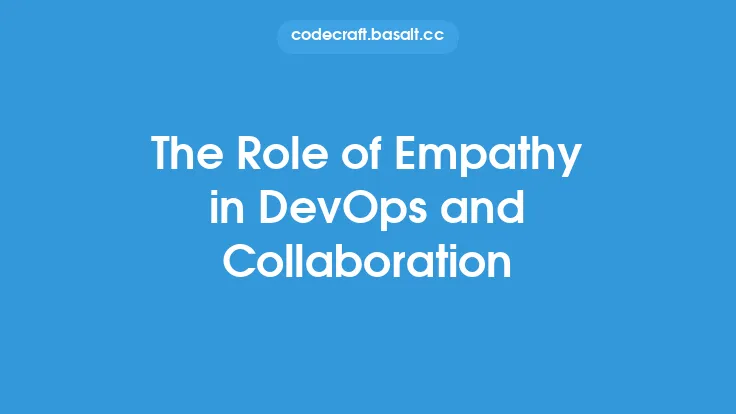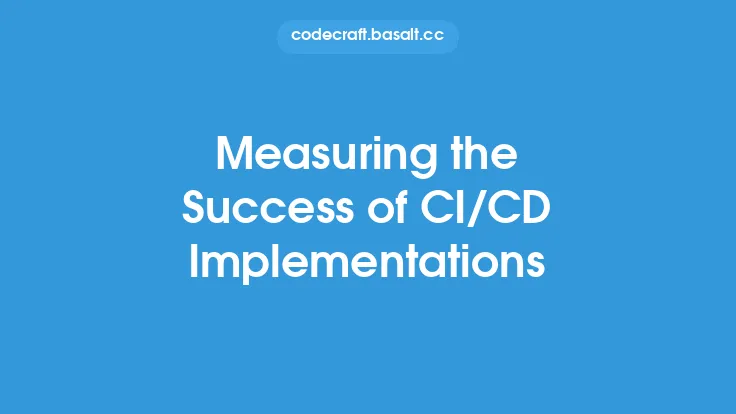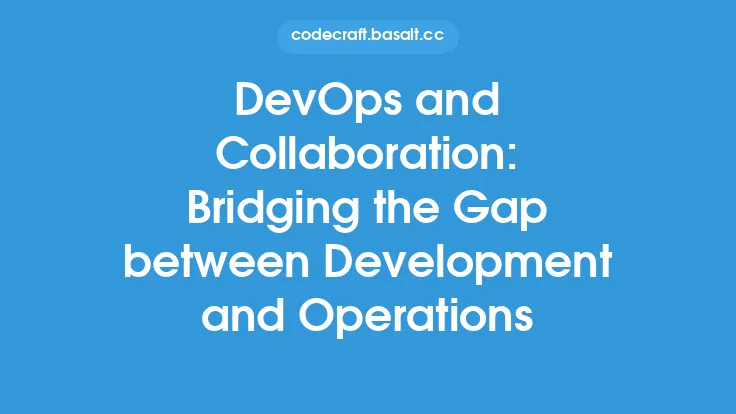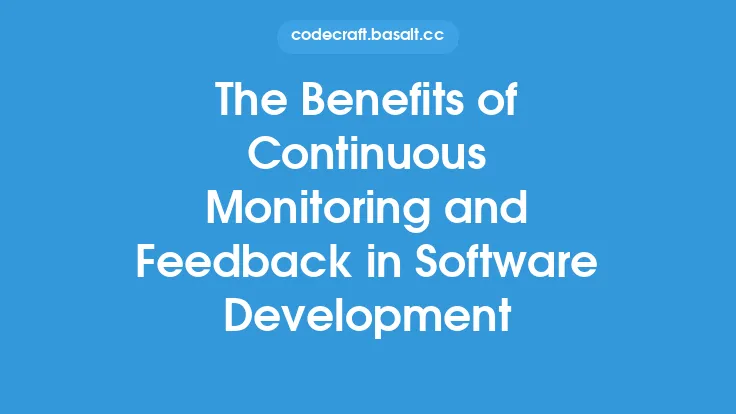Measuring the success of DevOps and collaboration practices is crucial for software engineering teams to evaluate their performance, identify areas for improvement, and make data-driven decisions. In today's fast-paced and competitive software development landscape, it's essential to have a clear understanding of how to assess the effectiveness of DevOps and collaboration practices. This article will delve into the key metrics, tools, and methodologies for measuring the success of DevOps and collaboration practices, providing software engineering teams with the insights they need to optimize their workflows and improve their overall performance.
Introduction to DevOps and Collaboration Metrics
DevOps and collaboration metrics are designed to measure the efficiency, effectiveness, and quality of software development and delivery processes. These metrics can be categorized into several key areas, including deployment frequency, lead time, mean time to recovery (MTTR), and defect density. Deployment frequency measures how often code changes are deployed to production, while lead time measures the time it takes for code changes to go from commit to deployment. MTTR measures the time it takes to recover from a failure, and defect density measures the number of defects per unit of code. By tracking these metrics, software engineering teams can gain valuable insights into their DevOps and collaboration practices and identify areas for improvement.
Key Performance Indicators (KPIs) for DevOps and Collaboration
Key performance indicators (KPIs) play a critical role in measuring the success of DevOps and collaboration practices. Some common KPIs for DevOps and collaboration include deployment frequency, lead time, MTTR, defect density, and customer satisfaction. Customer satisfaction is a critical KPI, as it measures the quality of the software product or service from the customer's perspective. Other important KPIs include code quality, test coverage, and continuous integration and continuous deployment (CI/CD) pipeline performance. By tracking these KPIs, software engineering teams can evaluate their DevOps and collaboration practices and make data-driven decisions to optimize their workflows.
Tools and Methodologies for Measuring DevOps and Collaboration Success
Several tools and methodologies are available for measuring the success of DevOps and collaboration practices. These include DevOps platforms such as Jenkins, GitLab, and CircleCI, as well as collaboration tools such as Slack, Microsoft Teams, and Trello. Other important tools include monitoring and logging tools such as Prometheus, Grafana, and ELK Stack, which provide valuable insights into system performance and health. Methodologies such as Agile, Scrum, and Kanban are also essential for measuring DevOps and collaboration success, as they provide a framework for software development and delivery. By leveraging these tools and methodologies, software engineering teams can gain a deeper understanding of their DevOps and collaboration practices and identify areas for improvement.
Data-Driven Decision Making in DevOps and Collaboration
Data-driven decision making is critical in DevOps and collaboration, as it enables software engineering teams to make informed decisions based on data and metrics. By tracking key metrics and KPIs, teams can identify trends and patterns in their DevOps and collaboration practices and make data-driven decisions to optimize their workflows. This includes using data to inform decisions on code changes, deployments, and system configuration, as well as using data to evaluate the effectiveness of DevOps and collaboration practices. By leveraging data-driven decision making, software engineering teams can improve the quality and efficiency of their software development and delivery processes.
Best Practices for Measuring DevOps and Collaboration Success
Several best practices are essential for measuring the success of DevOps and collaboration practices. These include establishing clear goals and objectives, tracking key metrics and KPIs, and using data-driven decision making to inform decisions. Other important best practices include leveraging automation and tooling to streamline DevOps and collaboration practices, as well as fostering a culture of collaboration and continuous improvement. By following these best practices, software engineering teams can optimize their DevOps and collaboration practices and improve their overall performance.
Challenges and Limitations of Measuring DevOps and Collaboration Success
Measuring the success of DevOps and collaboration practices can be challenging, as it requires tracking complex metrics and KPIs across multiple systems and tools. Other challenges include ensuring data quality and accuracy, as well as dealing with the complexity of modern software systems. Additionally, measuring DevOps and collaboration success can be limited by the lack of standardization and consistency in metrics and KPIs, as well as the difficulty of measuring intangible factors such as team collaboration and communication. By understanding these challenges and limitations, software engineering teams can develop strategies to overcome them and effectively measure the success of their DevOps and collaboration practices.
Conclusion
Measuring the success of DevOps and collaboration practices is essential for software engineering teams to evaluate their performance, identify areas for improvement, and make data-driven decisions. By tracking key metrics and KPIs, leveraging tools and methodologies, and following best practices, teams can gain valuable insights into their DevOps and collaboration practices and optimize their workflows. While measuring DevOps and collaboration success can be challenging, the benefits of improved software development and delivery processes make it a critical aspect of software engineering. By prioritizing the measurement of DevOps and collaboration success, software engineering teams can improve the quality, efficiency, and effectiveness of their software development and delivery processes.





